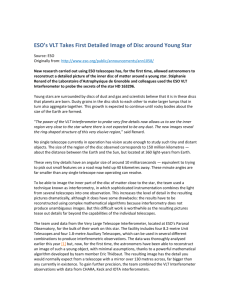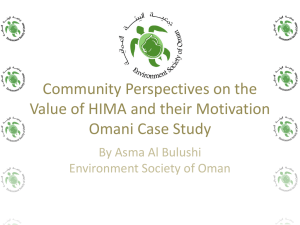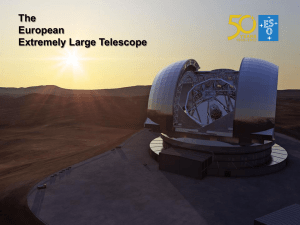appendix_c_-_directive_17_
advertisement
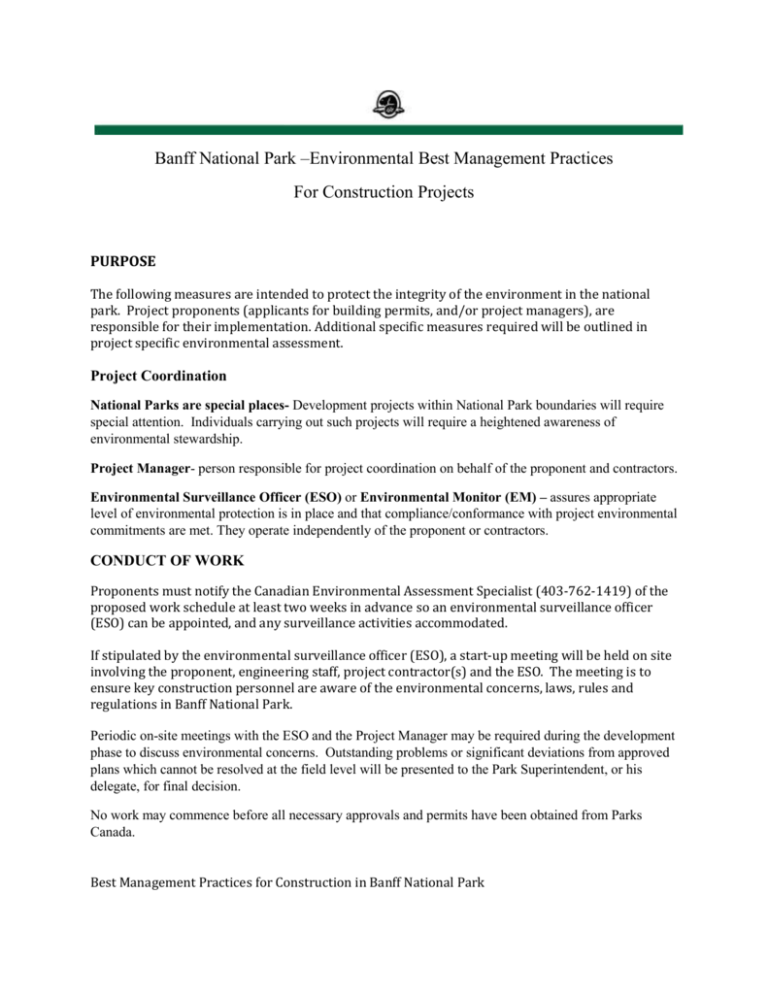
Banff National Park –Environmental Best Management Practices For Construction Projects PURPOSE The following measures are intended to protect the integrity of the environment in the national park. Project proponents (applicants for building permits, and/or project managers), are responsible for their implementation. Additional specific measures required will be outlined in project specific environmental assessment. Project Coordination National Parks are special places- Development projects within National Park boundaries will require special attention. Individuals carrying out such projects will require a heightened awareness of environmental stewardship. Project Manager- person responsible for project coordination on behalf of the proponent and contractors. Environmental Surveillance Officer (ESO) or Environmental Monitor (EM) – assures appropriate level of environmental protection is in place and that compliance/conformance with project environmental commitments are met. They operate independently of the proponent or contractors. CONDUCT OF WORK Proponents must notify the Canadian Environmental Assessment Specialist (403-762-1419) of the proposed work schedule at least two weeks in advance so an environmental surveillance officer (ESO) can be appointed, and any surveillance activities accommodated. If stipulated by the environmental surveillance officer (ESO), a start-up meeting will be held on site involving the proponent, engineering staff, project contractor(s) and the ESO. The meeting is to ensure key construction personnel are aware of the environmental concerns, laws, rules and regulations in Banff National Park. Periodic on-site meetings with the ESO and the Project Manager may be required during the development phase to discuss environmental concerns. Outstanding problems or significant deviations from approved plans which cannot be resolved at the field level will be presented to the Park Superintendent, or his delegate, for final decision. No work may commence before all necessary approvals and permits have been obtained from Parks Canada. Best Management Practices for Construction in Banff National Park Best Management Practices for Construction in Banff National Park Construction workers are required to obtain a National Park Pass. This temporary pass may be obtained from the front office at the Banff National Park administration building. All contractors must have a valid Business license which may be obtained through contacting the Banff National Park Business Liaison Officer at 403-762-1530. All park regulations, relevant federal and provincial acts, regulations, guidelines and codes of good practice will apply to all work and activities associated with this project. Hours of Work: Work hours are generally 7 a.m. and 7 p.m., Monday to Saturday and typically there is no work on Sundays or statutory holidays. 1. SITE ACCESS Only designated access routes are to be used by construction personnel only. Vehicle parking is restricted to established roads or identified parking area(s). It is the responsibility of the contractor to adhere to seasonal vehicle weight restrictions on specific roads such as the Minnewanka loop road. Road weight restrictions are implemented in the spring to minimize damage to road surfaces. The contractor is responsible to contact the ESO to acquire the restriction dates as the windows vary from year to year. Construction site boundaries must clearly be delineated by flagging or fencing materials and maintained throughout the duration of the project. Roads, sidewalks and other public accesses are to be maintained with minimal interference unless otherwise noted. 2. SANITARY AND GARBAGE The contractor shall be required to provide regularly serviced sanitary (toilet) facilities for construction personnel. The construction site must be maintained in a tidy condition. All on-site garbage containers used for domestic garbage must be bear-proof. Food waste is not to be thrown in construction waste bins. Burning or burial of waste is not permitted. 2 Best Management Practices for Construction in Banff National Park Trucks hauling excavation fill material and waste are responsible to ensure nothing escapes during transport. 3. WILDLIFE The contractor shall ensure that there is no harassment of wildlife occurs as a result of the construction activity and that no action is permitted which will attract wildlife to the site. The contractor will immediately notify Banff Dispatch at 403-762-1470, to inform of any wildlife encounters on or around the work site or crew accommodation. The contractor is to report observations of wildlife species such as cougar, wolf, lynx, bear, wolverine, and moose, to Banff Dispatch at 403-762-1470 and/or may inform the ESO. 4. CULTURAL RESOURCES The contractor will immediately inform the ESO and/or the Project manager of any items of historic interest or evidence of archaeological finds that are discovered on the development site ( i.e.: old garbage dump sites, cabin sites, etc.). Where possible, the object is to be left in situ until the ESO arrives. The ESO will provide direction to the Construction Project manager as to the method in which to proceed with the work through consultation with Park Archaeologists. All historical and prehistoric finds must be protected and will remain the property of Parks Canada. 5. SITE PREPARATION The work area must be clearly delineated using flagging tape. Use of spray paint is not permitted. 6. TOPSOIL/VEGETATION REMOVAL The contractor must contact the ESO at least 5 days prior to commencement of tree/vegetation removal. This will enable the ESO time for pre-site inspection. The topsoil layer in the BNP area is generally very thin. Successful site rehabilitation depends on careful salvaging of the limited topsoil/duff layer. Existing top soil should be stripped and stock piled separately from subsoil to prevent mixing. 3 Best Management Practices for Construction in Banff National Park Care must be taken during both grubbing and stripping operations to ensure that the trees and roots on the edge of the clearing limits are not disturbed or damaged. This phase will be closely monitored by the ESO. In some instances where steep back slopes are involved, grubbing and stripping may not be permitted. Stumps should be cut flush with the ground, and the ground cover left undisturbed to promote slope stability. This will be determined by an on-site inspection by the ESO. Material encountered below the topsoil layer, which is not suitable for construction purposes may be disposed of at designated location. Arrangements to dispose of the surplus material must be made through discussion with the ESO. 7. CONTAMINATED SOIL The issue of contaminated soils and disposal practices will normally be identified through the EA process. However, where past and present land use practices have led to soil contamination, certain actions will be required. These include: Soil testing at the expense of the proponent: Level of contamination will be in accordance with the Canadian Council of Ministers of the Environment guidelines, and acceptable levels will be decided by the park. Minimum acceptable standards for in-Park soil contamination and remediation will be to the "Parkland" level. Contaminated soil disposal will be at the expense of the proponent. Written proof of disposal of contaminated soils will be required. The closest Class 3 landfill site to Banff National Park is the Francis Cooke Landfill in Exshaw, contact number is 403-673-2708. 8. DISPOSAL OF TREES Generally, trees are to be cut so that they fall inside the cleared construction site parameters. Tree removal will be detailed on approved site plan or landscaping plan. If not the contractor must contact the ESO for instruction on site specific method of tree disposal Trees larger than 15 cm (DBH) shall be cut into blocks not to exceed 35 cm. and stockpiled at a designated location for use as firewood and/or if deemed necessary, the contractor is responsible to haul the wood to a pre-approved location. Trees under 15 cm (DBH) and other woody materials such as stumps, tops, and limbs can be disposed of by chipper and deposited at a designated site; or depending on fire hazard and weather conditions, on-site burning may be permitted through consultation with the ESO and Fire/Vegetation Specialist. 4 Best Management Practices for Construction in Banff National Park Where possible, every effort will be made to minimize the number of trees cleared. Douglas Fir trees are considered a special resource, and therefore, require consultation with the ESO before removal. 9. CONSTRUCTION MATERIALS Materials Storage Construction material shall normally be stored within the confines of the construction site. Under no circumstances may construction materials be stockpiled in the trees along the perimeter of the site or upon any area designated for protection within the site. Off-site storage of materials in undisturbed areas may be allowed only from pre-approval by the ESO. Trade Waste Trade waste (construction waste) materials will be disposed of at the designated trade waste area only. There no longer is a trade waste facility in Banff National Park. The nearest trade waste facility is the Francis Cooke Regional Class 3 Landfill located in Exshaw, AB. For more information contact the facility directly at 403- 673-2708. Toxic/Hazardous Materials All toxic/hazardous materials will be stored and used in accordance with relevant Federal and Provincial legislation pertaining to these materials. Spill contingency plans and equipment will be on-site, and employees will be aware of such emergency procedures as required. The ESO will be made immediately aware of any and all spills of toxic or hazardous materials. All hazardous wastes will be disposed of at an approved site outside BNP. This material will be disposed of in conformance with all relevant Federal and Provincial legislation and regulations pertaining to the transport and disposition of hazardous wastes. 10. FUEL STORAGE Permits for on-site storage of fuel or other inflammable liquids must be obtained from the ESO. Fuel storage and refuelling areas will be designated and must be a minimum of 50 metres from any water body. The designated storage area will be bermed to enclose 125 % of anticipated storage tank volume. The bermed storage area will be underlain with an impermeable liner. All contaminated rainwater, contained within the berm, will be collected and removed from the park. Other special protection measures may be required to prevent mechanical damage of the tank. All soil material contaminated during refuelling operations will be collected and disposed of outside BNP at an appropriate facility. Written verification of such disposal will be provided to the ESO. 5 Best Management Practices for Construction in Banff National Park Spill contingency plans will be developed and appropriate equipment to implement such plans will be in place, in the event of accidental spillage or tank malfunction. Fire protection equipment will be available on-site. The ESO or designate must be contacted immediately to be made aware of any spill. If the spill occurs outside of regular working hours, the contractor is to contact Banff Dispatch at 403-762-1470. 11. EXCAVATING Excavation areas must be fenced and clearly delineated to restrict access by both people and wildlife. Where possible, work will be conducted in such a manner to minimize leaving open excavations overnight. Any open excavations must be covered securely overnight. Disposal of surplus excavation material shall be handled in a similar manner to the disposal of surplus stripping material. It is extremely important in all excavations to ensure that excavated material is not permitted to sluff into the surrounding tree cover, or to bury any plant material that is to be retained. Trees and shrubs on the perimeter of the site can be severely damaged by burial or damage involved in retrieving this material at a later date. Rocks rolling down steep slopes during excavation or dumping of fill material can severely damage vegetation below. Special attention by equipment operators and extensive downslope protection work may be required. Careful equipment operation is required to ensure that mechanical damage to trees and surrounding vegetation does not occur. If damage does occur, the contractor will be responsible to replace the vegetation at their own cost. All equipment operators should be instructed that the operation of construction equipment off-site is not permitted. This applies both to the perimeter of the site, and to any areas within the site that are protected in a natural state. Park Archaeologists must be informed of any projects in the Park that require excavation. This will be scheduled at the preliminary/design phase of the project. Archaeological/historical concerns will be cleared by Park Archaeological Division prior to initiation of excavation. Material sources, material storage areas and width of excavation ditches, trucking requirements, etc., will be identified and recognized as part of the cost estimate of the project. All open excavations will be signed and fenced appropriately in order to minimize hazards to both the general public and to wildlife. 6 Best Management Practices for Construction in Banff National Park 12. FOUNDATION AND CONCRETE WORK Indiscriminate disposal of concrete or concrete residues around the site perimeter is not permitted. A concrete truck cleanout area will be identified for each project through consultation with the ESO. Concrete residues will be disposed of at an approved location outside the Park at the proponent’s expense. 13. POLLUTION OF RIVERS AND STREAMS No rock, silt, cement, grout, asphalt, petroleum product, lumber, vegetation, domestic waste, or any deleterious substance shall be placed or allowed to disperse into any stream, river, pond, storm or sanitary sewer, or other water course. All fuels, oils, lubricants and other petrochemical products will not be stored within 100 meters of any waterbody (including wetlands). The crossing of any waterbody (including wetlands) by construction equipment, or the use of such equipment within waterbodies is strictly prohibited unless prior approval has been confirmed through the EA process. Only approved chemically treated wood will be allowed near water courses. Sawdust and wood scraps will not be allowed to enter waterbodies. Erosion control measures will be implemented on all construction sites in order to ensure that off-site run-off is minimized and sediments contained within site perimeters. All pumping of water will be subject to approval of the ESO. Site rehabilitation will be an urgent priority. For construction areas adjacent to watercourses, special protection and / or reclamation measures may be required. River or streambeds will not be used for borrow materials. Excavated fill or debris will not be dumped into waterways. 14. POLLUTION PREVENTION AND SPILL REPORTING Contaminated waste from demolition/construction must be disposed as outlined previously. Fuel will not be stored on site without pre-approval. Refueling of excavation equipment will occur on hardened surfaces away from water resources only and care taken to avoid spillage. 7 Best Management Practices for Construction in Banff National Park All fuel, lubricant, oil, hydraulic fluid, or chemical spills must be reported immediately to the Banff Emergency Services (9-1-1). And measures undertaken for immediate containment and clean up by personnel on site. A spill kit of sufficient size to contain and clean up 110% of the site’s largest possible fuel/chemical spill must be retained on site. All personnel on site must be aware of the kit, its location and proper use. Noise and air pollution on site from excavation equipment and trucks will be kept to a minimum by shutting off motors when not in use. A radon test should be performed before the basement floor is poured so that venting can be installed if required. Deposit of deleterious substances such as paint, stucco mix, solvents, and petroleum products into street gutters or storm sewers is not permitted. Equipment and generator plants will operate in accordance with the Alberta Clean Air Act, and Federal Environmental Protection Service emission control regulations/guidelines. Work schedules and equipment use may be controlled to prevent excessive noise and disturbance to Park visitors. Any such control measures should be specified in the contract documents. Materials and work site areas will be wetted down as necessary, to prevent blowing dust and debris. Measures will be taken to contain and control and collect windblown debris. All hazardous and potentially toxic materials used in development projects will be securely stored in a responsible manner during construction activities. 15. SITE REHABILITATION The contractor must consult with the ESO for the acquisition of site specific native seed mixes and plantings acceptable for use in the park. Native species with low palatability to wildlife are preferred, to avoid enticement and conflict. Fruit bearing trees are generally not acceptable under this present strategy. Trans-plantings may be available from within the park by permit only. Ensure all seed used or sod for lawns and other plantings, such as trees and shrubs, do not transport or carry non-native plants, noxious or restricted weeds. Should a noxious or restricted plant species appear at a future date, the proponent will be responsible for eradication at the direction of Parks Canada. Fencing must meet "Architectural Motif Guidelines for Banff National Park, and will be designed to prevent wildlife access to lawns and gardens. 8 Best Management Practices for Construction in Banff National Park Topsoil or other soil (sod) and mulch materials for restoration must be certified free of non-native plant seed. All trees and plants not designated for removal from a site must be protected. Roots of trees to drip line must be protected during excavation and site grading to prevent disturbance and damage. Unnecessary traffic, dumping, and storage of materials over root zones can cause soil compaction and suffocation of roots. Site rehabilitation will receive the highest level of attention. A landscape plan that identifies rehabilitation goals and identifies physical limitations (i.e. water, soil nutrients, suitable species, etc.) to rehabilitation success, will be required. Any deviation from the Park approved landscape plan will require permission from the Superintendent or designate. All survey stakes, flagging tape, etc. is to be removed at the completion of the project. The Construction Project Manager and ESO will inspect the construction site for the following: -a thorough site cleanup including general litter -assess that any required topsoil is clean and weed free -sources of topsoil introduced into the Park require ESO pre-approval -the use of appropriate plant species and plant seed mix 16. BLASTING (see Park Directive #14 "Control of Explosives") All blasting must conform to existing regulations and be accomplished under the supervision of a licensed blaster. No blasting will be allowed under water or within 100 meters of spawning beds. Storage of explosives will be subject to National Parks Regulations. Fly rock shall not be permitted to damage surrounding vegetation. Use of blasting mats may be required. 17. ENERGY EFFICIENCY To minimize demands placed on existing energy infrastructure, energy efficient and water saving fixtures must be incorporated into any new facility. Exterior lighting must meet the Parks Canada “Dark Skies” lighting policy. 9 Best Management Practices for Construction in Banff National Park BANFF DISPATC H NON-EMERGENCY – 403.762.1470 BANFF DISPATCH EMERGENCY – 403.762.4506 HIGHWAY OR TOWN EMERGENCY - 911 10
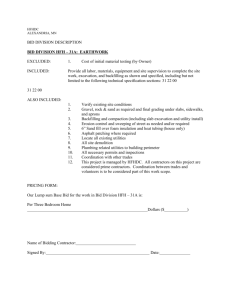


![History Sheet Information entered by [ ]](http://s2.studylib.net/store/data/005563412_1-2d36c94ede39d8801de2c2a07dc961cc-300x300.png)
